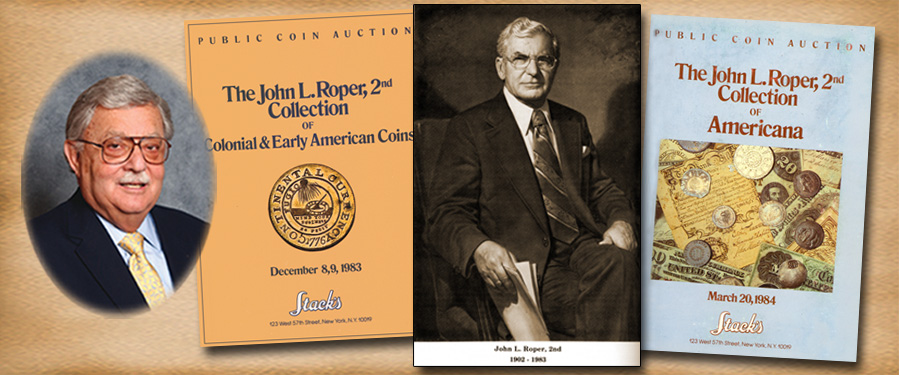
I have discussed what makes an "old timer collection" in previous articles. The collection of colonial and early American coins formed by John L. Roper II was unquestionably one of the finest of the early-to-mid-twentieth century and has become a model for other collectors. The series he collected reflected the monetary history of the early colonial days of America, and his collection included many of the great rarities of the period.
Stack’s had the pleasure of helping build this collection in the mid-twentieth century and had the pleasure of offering it in two sales in 1983 and 1984. These sales will be described more fully later.
First let me tell you about John L. Roper II. He was a prominent Virginia industrialist and public figure, born in Norfolk, Virginia, on September 18, 1902. His grandfather, the first John L. Roper, came of Pennsylvania stock and as a young man went West to prospect for gold in the 1850s. He returned East in 1861, was commissioned in the Pennsylvania State Militia, and was later raised to the rank of Brevet Major. After the Civil War he settled in Norfolk, Virginia and founded a lumber company, which bore his name. In a short period of time it became one of the largest lumber companies in the East. His eldest son, who was the father of the subject of this story, branched out on his own and formed the Norfolk Shipbuilding and Drydock Company in 1916. After the Great War the Roper family became the sole proprietors of the firm.
The Second John L. Roper, subject of this story, received his education at the Norfolk Academy and later at Princeton University. He entered the family firm in 1925 and experienced “dirty hands” work before moving up to supervisory and lower management jobs. It was the family tradition that first hand experience and training was essential to successful industrial leadership.
Immediately after Pearl Harbor, Mr. Roper volunteered for service in the U.S. Navy. He was informed that he could do more for the Navy and his country by remaining with the Norfolk Shipbuilding Company. From 1942 to 1945 he was superintendent of all Navy work sent to his firm. In 1946 he became assistant general manager and he became president and general manager in 1956. He retired in 1973, but remained Chairman of the Board till he died in 1983.
John L. Roper II’s business success was firmly set against a background of historic American traditions that went back to the earliest days of the republic. He always kept himself as a busy man, working for charities and various causes, including the Eastern Virginia Medical School, the United Negro College fund, the Norfolk United Fund and the Norfolk General Hospital. His wartime activities led to his being a member of the Navy League of Norfolk and Director of the Navy Y.M.C.A. With his great interest in early American history he supported the Chrysler Museum in Norfolk and the Norfolk





